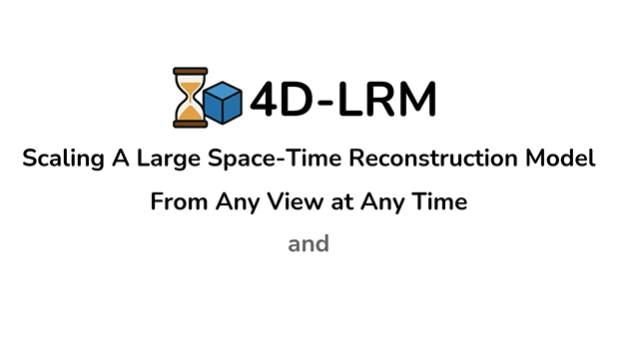4D-LRM AI Model Revolutionizes Spatiotemporal Reconstruction
4D-LRM AI Model Breaks New Ground in Spatiotemporal Reconstruction
A significant advancement in artificial intelligence has emerged with the development of 4D-LRM (Large Space-Time Reconstruction Model), a cutting-edge system capable of reconstructing dynamic objects across both space and time dimensions. This model represents a substantial leap forward from traditional 3D reconstruction techniques by incorporating the crucial fourth dimension: time.

Technical Breakthroughs
The core innovation of 4D-LRM lies in its ability to predict 4D Gaussian primitives, enabling high-quality scene generation from any temporal perspective using minimal input data. Unlike conventional methods that require extensive view inputs, this model achieves remarkable accuracy with just a few reference points, thanks to its pre-training on large-scale 4D datasets.
Researchers highlight the model's exceptional performance with dynamic scenes, maintaining fidelity even with fast-moving objects or complex lighting conditions. The system's architecture allows for smooth interpolation between time points, creating seamless transitions that were previously unattainable.
Practical Applications
Industry experts anticipate widespread implementation across multiple sectors:
- Virtual and Augmented Reality: Creation of immersive environments with realistic temporal dynamics
- Film Production: Significant reduction in special effects costs and real-time perspective adjustments
- Industrial Simulation: Accurate modeling of mechanical processes and environmental interactions
- Autonomous Systems: Enhanced training environments for self-driving vehicles and robotics
The model's versatility suggests potential as a foundational technology for next-generation digital modeling platforms, bridging gaps between physical and virtual worlds.
Challenges and Future Development
While demonstrating impressive capabilities, 4D-LRM currently faces several limitations:
- High computational resource requirements
- Need for optimization in real-time applications
- Robustness in extremely complex scenarios
The research team indicates ongoing work to address these challenges through algorithmic refinements and hardware optimizations. Future iterations may incorporate adaptive learning mechanisms to improve performance with diverse input types.
Key Points:
- 4D reconstruction capability combining spatial and temporal dimensions
- Few-shot learning reduces data requirements significantly
- Potential to transform multiple industries through dynamic scene modeling
- Current limitations focus on computational efficiency and real-time processing
- Project details available at Hugging Face